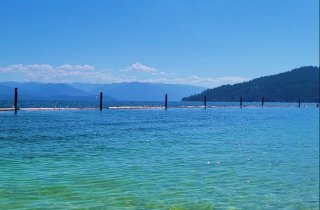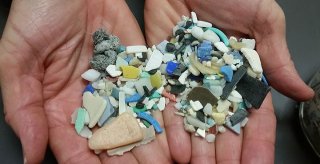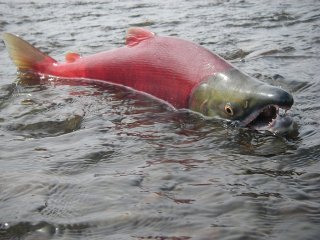Advanced Ambient Water Quality Research
- Recreational Water Quality
- Environmental Health Effects of Microplastics
- Aquatic Life Guidelines
- Ambient Water Quality Criteria for Chemical Mixtures

Human health and aquatic life are impacted by exposure to chemical and non-chemical contaminants in water, including chemical mixtures, microbial pathogens, plastics, and other contaminants of immediate and emerging concern.
EPA researchers are providing the science needed to support recommendations for new or revised ambient water quality criteria, including the development of methods to detect chemical and non-chemical contaminants in ambient waters. The data, models, tools, and applications developed help ensure the EPA’s ambient water quality criteria are optimized based on advanced scientific information.
Forward looking research will continue to explore and develop innovative methods, approaches, and technologies that provide improved understanding of effects of chemical contaminants and non-chemical stressors on environmental health and support potential future ambient water quality criteria.
Recreational Water Quality and Human Health

EPA is continuing to refine and advance methods and tools to protect human health from contact with contaminants in recreational waters. Research is supporting new and revised recreational water quality criteria and methods, including analyses of new and existing health studies, evaluation of rapid analytical methods for fecal indicators, and development and implementation of microbial source tracking approaches.
EPA researchers are furthering work on developing persistence information and water quality forecasting tools using modeling. They are also working to advance the development and application of methods to evaluate antimicrobial resistance in bacteria and their gene occurrence in fresh and marine surface waters.
Related research:
- Research to Support and Implement Recreational Water Quality Criteria
- Human Dimensions of Water Quality Research
- Methods to Measure Waterborne Contaminants Research to Minimize Health Risks
- EPA scientists evaluate effectiveness of fecal indicator test methods in marine, estuarine, and freshwater systems
- EPA scientists use periodic counts to estimate coastal estuary recreational use
- EPA scientists and partners conduct hydrodynamic and water quality modeling study in Florida’s Pensacola Bay
Environmental Health Effects of Microplastics

There is a pressing need to develop and standardize collection, extraction, quantification, and identification methods for micro/nanoplastics to improve reliability, consistency, and comparability across studies. EPA's research is helping to inform recommendations for best practices and standardized methodologies to characterize and assess the extent of micro and nanoplastics pollution in water and is filling key data gaps necessary to assess microplastic effects on the environment and human and aquatic health.
Learn more about EPA's microplastics research.
Supporting Aquatic Life Guidelines for Chemicals

To further support aquatic life criteria development, toxicity data and predictive toxicological methods for individual chemicals and for chemical mixtures are needed.
EPA research is providing the science needed to develop these data and methods, and is addressing extrapolation across chemicals, response endpoints, and exposure conditions. To support the Agency’s Per- and Polyfluorinated Substances (PFAS) Action Plan, research on PFAS is being emphasized and will include other chemicals as appropriate.
Related resources:
- UV Filters in Sunscreens and Aquatic Environmental Health
- Aquatic Life Criteria and Methods for Toxics
- Aquatic Life Criteria Table
- Aquatic Life Water Quality Resources
Supporting Ambient Water Quality Criteria for Chemical Mixtures
Traditional exposure and effects assessment methods are generally ineffective at identifying drivers of toxicity from complex mixtures, such as wastewater treatment effluent. EPA research is addressing current limitations in the characterization of chemical mixtures and resulting toxicity through predictive models, non-targeted analytical methods, and effects-based measures for applications in ambient water quality criteria development.
EPA scientists are focusing on the development and assessment of new methods to better characterize mixture composition and toxicity, as well as computational methods to predict chemical co-occurrence in complex sources. Research includes the development and evaluation of the following methods:
- In vivo and in vitro effects-based methods to identify activated response pathways and modes of action.
- Non-targeted analytical methods to identify mixture components.
- In silico methods to predict mixture composition based on co-occurrence patterns.
